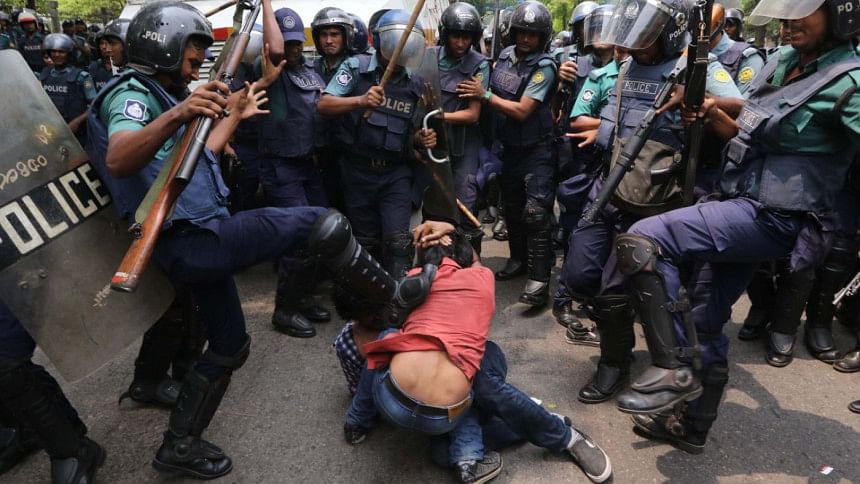The blurring of distinction between law enforcement and law breaking

OF late it seems that we get confused as to who the law breakers are and who the law enforcers are after reading the newspapers or watching the news. In a normal state of affairs such confusion is unreal because law enforcers would be typically those who citizens trust to protect them from miscreants, criminals, and other anti-social elements. These law enforcers are a part and parcel of a civil administration that would be trained as a disciplined force to save and protect the society from elements who represent the opposite end of the spectrum. In a normal society, people feel secure because they know that this disciplined force is trained to protect them, and not harm them. In most countries and societies all members of this force, known as the police, are viewed as friends and protectors not their adversaries.
Unfortunately, this is not a common sight in societies and countries where law is applied whimsically. This is not common in countries where the law enforcement machinery is handicapped by a serious gap in training and education in professionalism, human rights, and behaviour.
The most recent incident of police actions to control a crowd of protesters who were manhandled is perhaps not the only episode of excessive use of police power in history. The incident received global coverage because of the nature of the protest, which was to highlight apparent police ineffectiveness in stopping sexual crimes against women. In their effort to stop the protesters, the police used any means they could, including beating and assaulting women protesters.
There have been many more egregious occurrences of excessive police force in the past involving ferocious beatings of the kind that we witnessed in this case. In some cases, the victims had to be hospitalised. Some of the incidents get reported, many others do not. Most often these incidents are forgotten until new episodes get our attention.
There is no exact definition of excessive force, but the term can be used to describe force greater than what a reasonable police officer would use under the circumstances. But it is reasonable to assume that during a chaotic social situation, the law enforcement officials will be expected to take all measures to restore law and order. However, the police can take such a step when the situation demands such actions. In a normal unarmed street protest, the police can stop the protesters either by commanding them to do so over a microphone, failing which, they can apprehend the protesters if they deem them dangerous to the surroundings. In most cases such actions are enough. In more serious cases when the lives of the police are threatened, they may resort to riot preventing methods that include tear gassing, water spraying or, in extreme cases, firing bullets.
I do not think the demonstrators, who protested the April 14 sexual assault, posed any serious threat to the cops to be eligible for such inappropriate and harsh response. I also do not think the police reacted in this manner because the protesters broke any law as of such. A civil protest is a legal right of a human being so long as it remains peaceful. Sadly, the excesses happened because we do not have accountability either in our governance or in our administration. It took place because over the years the law enforcement machinery was used at will by various parties to fulfil different purposes other than ensuring the law and order of the country. Our police forces, therefore, feel that they can get away with any violation of law as long as they do not 'annoy' the state authorities.
It is not like the excessive use of police force is unique to our country. Even a perfunctory look of exploitation of power by law enforcement agencies all over the world will show enough evidence of such misuse. In recent months, several US cities were rocked by protests over excessive use of police force. In all the cases, the officers were dismissed, or arraigned in a court of law. But the narrative on the abuse of power by police officials does not end with the dismissal or the arraignment of the misbehaving officials. These incidents led the state officials to further analyse police training and reform it to ensure better handling of law and order situations.
Reforms of official training of law enforcement forces and better handling of relationships with the public can only happen in countries and societies that are on a firm and well-established platform of good governance, transparency, and accountability. It cannot happen in a vacuum. Our law enforcement officials can be trained in the latest crowd control methods and law and order restoration techniques, but their performance can only be improved with more accountability and transparency in their day to day work. This lucidity and liability will happen only when it becomes the norm for not only the police but also for the state and the government.
The writer is a political analyst and commentator.

 For all latest news, follow The Daily Star's Google News channel.
For all latest news, follow The Daily Star's Google News channel. 



Comments